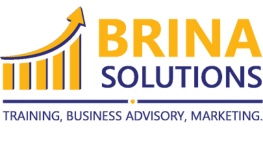
Product activation is a critical step in ensuring your product gains traction, engages users, and drives revenue. However, achieving a measurable return on investment (ROI) requires a well-thought-out approach that aligns your activation efforts with customer needs and business objectives. Here’s a detailed guide on how to design effective product activation strategies to maximize ROI.
1. Understand Your Target Audience
Knowing your audience is the foundation of any successful product activation strategy. Invest time in market research to define customer personas, their pain points, and what motivates them to engage with your product.
Tips to Understand Your Audience:
- Surveys and Interviews: Gather direct feedback to understand customer preferences.
- Analytics: Use tools like Google Analytics or CRM data to identify trends in customer behavior.
- Social Listening: Monitor conversations on social media to identify unmet needs or frustrations.
Example: A beverage company launches a summer campaign targeting health-conscious millennials, emphasizing low-calorie options in their product activation events.
2. Set Clear Goals and Metrics
Define specific objectives for your product activation strategy to measure success effectively. Ensure these goals align with broader business KPIs, such as customer acquisition, engagement, or revenue growth.
Examples of Metrics to Track:
- Conversion Rate: Percentage of users who complete a desired action after activation.
- Engagement Metrics: Social media shares, likes, and comments from activation campaigns.
- Sales Lift: Increase in product sales during and after activation.
Pro Tip: Use SMART (Specific, Measurable, Achievable, Relevant, Time-bound) goals to maintain focus and clarity.
3. Leverage Experiential Marketing
Experiential marketing creates memorable, hands-on experiences that deepen customer connections with your product. These activations help your brand stand out in a crowded marketplace.
Ideas for Experiential Product Activation:
- Pop-Up Stores: Showcase your product in high-traffic areas for limited-time engagement.
- Interactive Demos: Allow users to test and experience your product in action.
- Immersive Events: Create a themed event that aligns with your product’s unique value proposition.
Example: A skincare brand sets up a pop-up booth at a marathon event, offering free sunscreen samples and consultations.
4. Utilize Digital Channels for Activation
Digital platforms amplify the reach of your activation campaigns and provide tools for detailed performance tracking. Use social media, email marketing, and digital ads to engage users before, during, and after the activation.
Effective Digital Activation Strategies:
- Influencer Partnerships: Collaborate with influencers to generate buzz and drive traffic to activation events.
- Interactive Content: Use quizzes, polls, or virtual reality experiences to capture attention.
- Social Media Campaigns: Create branded hashtags and encourage user-generated content.
Example: A tech company launches a social media challenge encouraging users to share how their product improves productivity, with the best entries winning a free trial.
5. Incorporate Personalization
Personalized product activation strategies create a stronger emotional connection with customers, making them more likely to engage and convert.
Techniques for Personalization:
- Custom Offers: Tailor discounts or product recommendations based on user preferences.
- Targeted Campaigns: Use data to deliver relevant messaging to different audience segments.
- Event Customization: Design experiences that reflect the interests of your target demographics.
Example: A fitness brand provides personalized training plans and free consultations during a gym activation campaign.
6. Offer Free Trials and Exclusive Discounts
Letting customers experience your product with minimal risk builds trust and increases the likelihood of long-term adoption. Combine this with time-limited offers to create urgency.
Tips for Effective Free Trials:
- Highlight key features that showcase your product’s value.
- Include onboarding support to ensure users understand how to use your product.
- Use follow-up campaigns to convert trial users into paying customers.
Example: A SaaS company offers a 14-day free trial with in-app tutorials and follow-up emails highlighting premium features.
7. Engage Your Team and Partners
A successful activation strategy requires collaboration between marketing, sales, and customer support teams. Involve your team in planning and executing the campaign for better alignment and smoother execution.
How to Engage Internal Teams:
- Host brainstorming sessions to gather creative ideas.
- Provide training to ensure consistent messaging.
- Set shared goals to foster collaboration.
Example: A retail chain hosts a pre-launch meeting where employees participate in role-playing exercises to perfect their pitch for a new product.
8. Monitor, Measure, and Adjust
Tracking the performance of your activation campaigns ensures you stay on track and identify areas for improvement. Use real-time analytics to monitor engagement and conversion rates during the activation.
Metrics to Monitor:
- Website traffic and conversions.
- Social media engagement (e.g., reach, shares, and comments).
- Sales and revenue generated directly from the campaign.
Pro Tip: Use A/B testing to determine which activation strategies resonate best with your audience.
Conclusion: Activate Success with Strategic Product Launches
Effective product activation strategies go beyond creating awareness—they build lasting relationships with customers and drive measurable ROI. By understanding your audience, leveraging digital tools, and continuously refining your approach, you can ensure your activation efforts deliver impactful results.
Ready to achieve ROI with tailored product activation strategies? Contact Brina Solutions for expert guidance on designing impactful campaigns that connect with your audience and drive growth. Let’s bring your product to life!







Leave a Reply